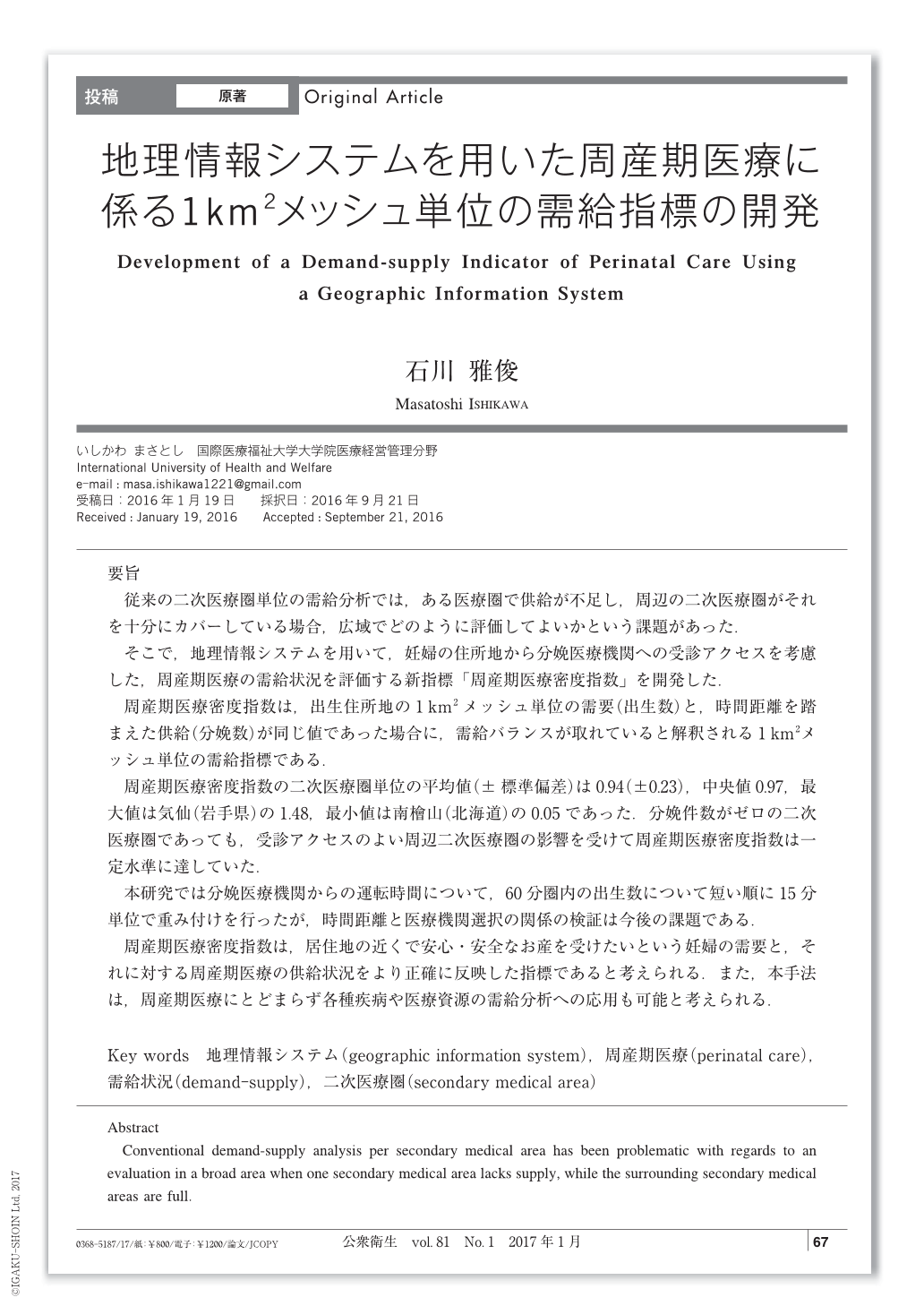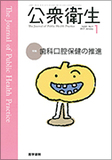Japanese
English
- 有料閲覧
- Abstract 文献概要
- 1ページ目 Look Inside
- 参考文献 Reference
要旨
従来の二次医療圏単位の需給分析では,ある医療圏で供給が不足し,周辺の二次医療圏がそれを十分にカバーしている場合,広域でどのように評価してよいかという課題があった.
そこで,地理情報システムを用いて,妊婦の住所地から分娩医療機関への受診アクセスを考慮した,周産期医療の需給状況を評価する新指標「周産期医療密度指数」を開発した.
周産期医療密度指数は,出生住所地の1km2メッシュ単位の需要(出生数)と,時間距離を踏まえた供給(分娩数)が同じ値であった場合に,需給バランスが取れていると解釈される1km2メッシュ単位の需給指標である.
周産期医療密度指数の二次医療圏単位の平均値(±標準偏差)は0.94(±0.23),中央値0.97,最大値は気仙(岩手県)の1.48,最小値は南檜山(北海道)の0.05であった.分娩件数がゼロの二次医療圏であっても,受診アクセスのよい周辺二次医療圏の影響を受けて周産期医療密度指数は一定水準に達していた.
本研究では分娩医療機関からの運転時間について,60分圏内の出生数について短い順に15分単位で重み付けを行ったが,時間距離と医療機関選択の関係の検証は今後の課題である.
周産期医療密度指数は,居住地の近くで安心・安全なお産を受けたいという妊婦の需要と,それに対する周産期医療の供給状況をより正確に反映した指標であると考えられる.また,本手法は,周産期医療にとどまらず各種疾病や医療資源の需給分析への応用も可能と考えられる.
Abstract
Conventional demand-supply analysis per secondary medical area has been problematic with regards to an evaluation in a broad area when one secondary medical area lacks supply, while the surrounding secondary medical areas are full.
Therefore, we have developed a new index called the “perinatal care density index”, which is used to evaluate the demand-supply situation for perinatal care, while considering accessibility to a delivery care facility from a pregnant woman's home by using a geographical information system.
The perinatal care density index is a demand-supply index per 1km2 mesh, which is recognized as being well-balanced between demand and supply in case the demand (number of births) and supply (number of deliveries) per 1km2 mesh in the birth location are the same value.
The perinatal care density index of a secondary medical area marked 0.94 (±0.23) as the average value, 0.97 as the middle value, and 1.48 as the maximum value in Kesen (Iwate prefecture). The minimum value was 0.05 in Minami Hiyama (Hokkaido prefecture). The index reached a certain level and was affected by the surrounding secondary medical area, which had good accessibility.
This research consists of an evaluation with a weighting system that measured every 15minute unit in the area up until units 60minutes away. Verification of the relationship between time, distance, and selection of the medical facility is yet to be conducted.
This index is considered to be an index that accurately reflects the demand-supply situation between demands from pregnant women who wish to stay close to their homes in order to give birth safely and comfortably, and a supply of perinatal care. Furthermore, this method can be applied not only to perinatal care, but also to a demand-supply analysis for various kinds of diseases or medical resources.

Copyright © 2017, Igaku-Shoin Ltd. All rights reserved.


